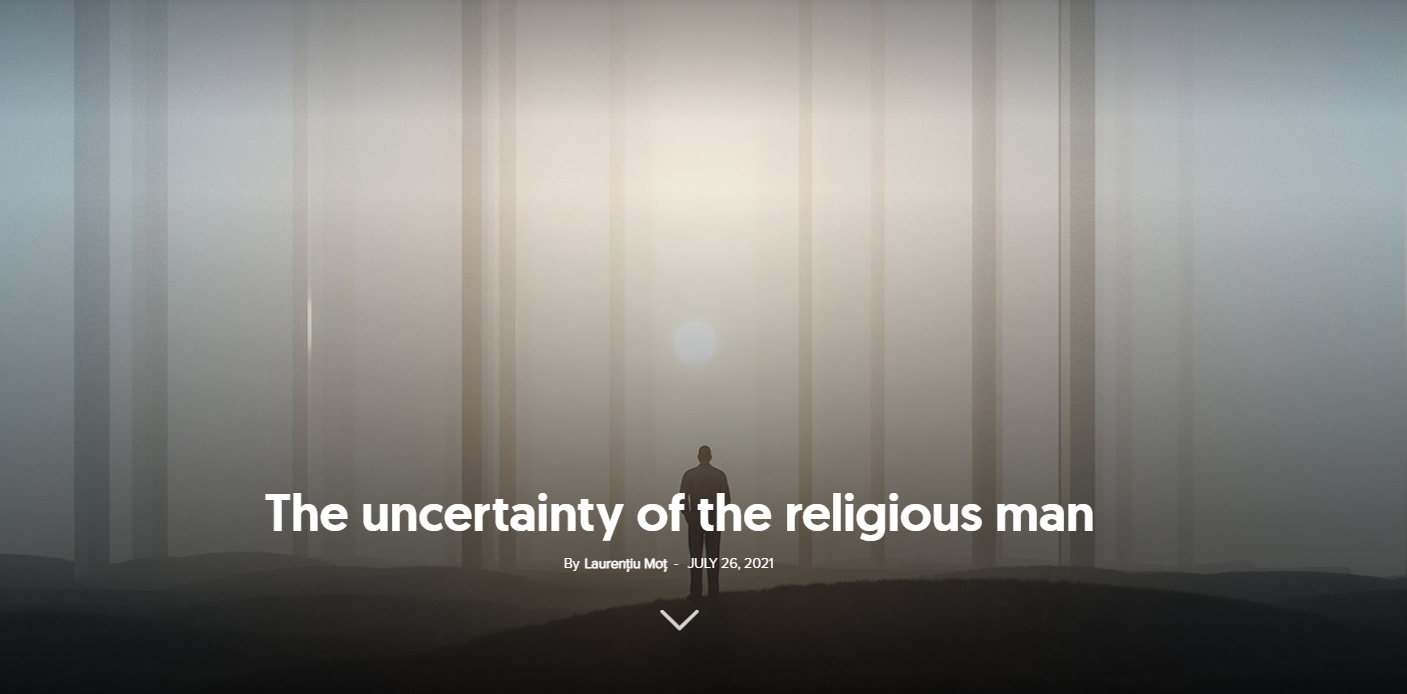When I read how a non-religious mother felt she needed to calm herself down at the thought that her child might begin to believe in God, I was surprised and almost offended.
To me, the phrase “Relax…it’s just God” is an oxymoron. God can never be “just” God. But for Wendy Thomas Russell, a well-known American journalist, it seems like the aha-moment had come for her daughter’s education.
The editorial in which Wendy confesses that, as a non-religious mother, it would have been easier for her to talk to her little girl about sex than about God, is a delicious read. But the multitude of dynamic images she uses to describe the moment when she had to have the first discussion about God with her little one manages to conjure an image of a battlefield on which two religions are fighting, rather than a fight between a religion and the truth.
“Mommy, do you know what?”
“I felt like a cartoon character being hit in the back of the head with a frying pan. My heart raced. I’m quite sure I began to sputter. Visions of Darwin and the evolving ape-man raced through my mind, followed closely by my childhood image of the big guy upstairs in his flowing white robes. I couldn’t speak.” Maxine, Wendy’s little girl, had learned from a Jewish kindergarten classmate she liked that there was a God who had created all people and victoriously told her mother: “Mommy, you know what? God made us!”
Wendy says that the short conversation with her five-year-old daughter caught her unprepared and left her wondering how to deal with the “situation” as a “science-minded non-believer with a generally non-confrontational personality.” “I wanted to be truthful about what I believed to be truth, but I didn’t want to indoctrinate her into my worldview either. And I certainly didn’t want others indoctrinating her into theirs, either.”
What if she believes in God?
The situation came to a head when she confessed the whole dilemma to her husband, and he responded: “What if she believes in God? It’s not what Maxine believes, but what she does in life that matters.” Wendy said she realised that she needed to relax. After all, “it was just God”. So, she began to talk to her daughter about “lots of gods.”
“We talked about Brahman and Buddha, Jesus and Muhammad. My husband bought her a Children’s Bible, and I brought home lots of picture books highlighting aspects of various religious cultures.
“To my delight, Maxine became genuinely interested in religion—as long as it came in bite-sized pieces, rather than overly long oratories. She became engaged in the stories we told, and good at deciphering the various ‘moral’ aspects of various tales for herself. In her hands, the Bible wasn’t a tool of indoctrination, but a tool of religious literacy—even critical thinking.”
Two days a week
I began to marvel at the idea of an atheist family providing religious instruction to their little girl, but that wasn’t exactly the case. Maxine, now nine, says she believes in God two days a week, Sunday and Wednesday. “No longer is there awkwardness around the subject,” her mother says. “We talk about lots of different beliefs, encourage her to learn about what motivates the faith of others, and make clear that there is no shame in choosing an unpopular path. After all, her own parents are happy, well-adjusted, and (I like to think) good-hearted people.”
This conclusion encompasses two elements of idealism that are largely typical. Let me explain.
Zero indoctrination
The first element is the idealization of a “no indoctrination” education. This is seen as an ideal climate for development, in which the child is presented with a rich range of religions and is encouraged to choose which one to believe. This sounds good, in theory. In practice, however, the child is exposed to this palette by a parent who cannot be objective, no matter how hard they try. The fact that Wendy explained the “motivations” behind the religions to Maxine is just one argument.
If you present the palette of religions objectively (true to the doctrine of each denomination), but create subjective connections between religions and reality (“Mommy, but do you know why they believe that?”), all objectivity is reduced to zero. It’s utopian to think you can’t indoctrinate your child. You may do it more subtly, but you will still indoctrinate them, even if you don’t want to. And that, after all, is a good thing.
A 5–9-year-old child does not have the rational (even biological) or cultural capacity to evaluate the reference points of religions, or to calculate the trajectory of consistency or inconsistency with these reference points, and therefore doesn’t have the ability to choose for themselves. So, it is very possible for a child to make a choice using illogical criteria (like Maxine, who believes in God two days a week) or based on the subjectivity of others, who do not use kid gloves when talking to their child about religion (not necessarily out of malice or ignorance).
It is more realistic to assume that, in your experience, you have amassed a wisdom capital about life, certain truths that you consider valuable, and that, because you see them as valuable, you would like your child to have them too. You don’t force them, nor do you blackmail them into believing these, but you defend these in front of them, honestly, as something you know will be useful to them, respecting their freedom to choose something else. And that brings me to the second questionable part of Wendy’s conclusion.
Absolute freedom
The journalist says that she encouraged Maxine not to be afraid to choose the “unpopular path.” By that she meant, of course, atheism. Atheism, however, is the “unpopular path” only in the eyes of those who want to promote it. If we look at the statistics in the USA, we see that the number of atheists and agnostics is constantly increasing. According to recent estimates by an independent think tank, the percentage of non-religious people will increase from 16% in 2010 to 26% in 2050. (Worldwide, the percentage of unaffiliated people is declining, not because of a lack of popularity, but because religious people have a higher fertility rate.)
If Maxine chooses the unpopular path of becoming a theist, it will probably not be easy for Wendy to accept that God is not “just God” in her little girl’s life.
The relaxed approach of granting ‘absolute freedom’ is also a myth in the religious education of children, because, even if you succeed in what is impossible for many parents—that is, to allow your child to choose a spiritual path different from yours—it will still affect you emotionally. It would be more realistic to assume that your child’s religion is not inconsequential to you and that you will help them make decisions in accordance with what you consider beautiful, good, and true, without forcing them to agree with you, no matter how much the disagreement might hurt. In other words, you will respect their freedom, while directing it, especially initially.
Never “just” God
The truth is that, no matter how many times we repeat the expression to reassure ourselves, God is never “just God”. We do not live in a religiously septic world. This makes God an impossible presence to ignore, even when we do not believe in Him, because others believe and act according to their faith.
So, even if we had brilliant children, able to make good decisions for their age, we do not live in a world where everyone respects our ideal of objectivity, where no one has bad intentions, and where no one proselytizes or makes education mistakes, however pure their motivations. That’s why an open education, the buffet-style, “These-are-the-options, choose-what-you-want” kind of education, fails to adapt to reality. We can’t expect it to be effective. It would be like expecting to be able to relax while holding our breath underwater.




















